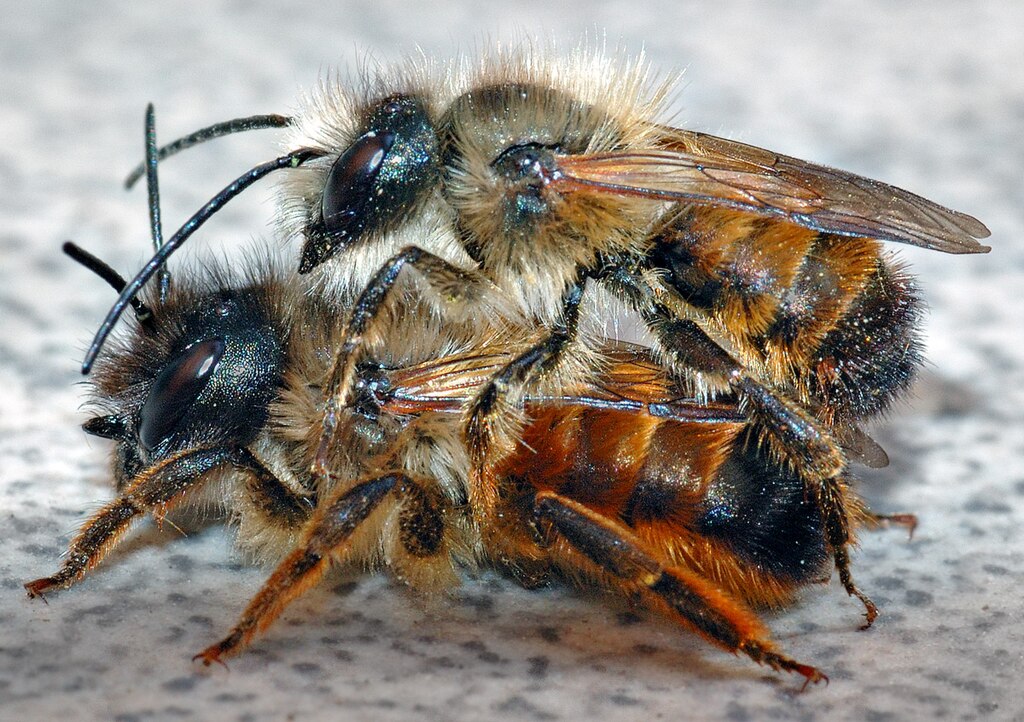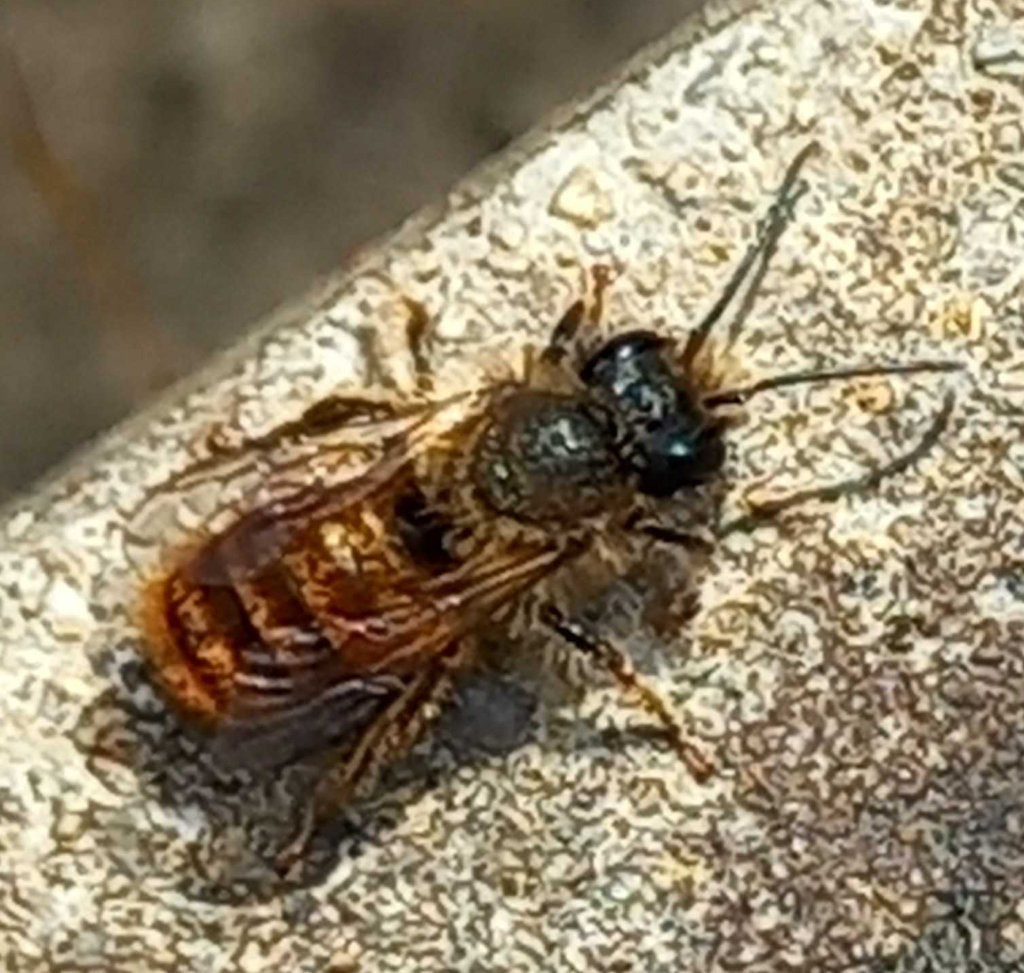
If you’re like me, you find the damage wrought by us humans on the natural world very depressing. The easiest way to cope is by just not thinking about it; but the ostrich approach – while a form of self-preservation – will, of course, only add to the problem. Most of us, though, if we are sufficiently engaged, can do some, albeit very small, things to help nature. An individual effort might only be a minuscule droplet in the bucket, but added together…
Which is a comforting thought.
One cheering thing I’m doing at present is my ‘bee house’. When I say “house”, it’s not a fashionable ‘beach hut’-style one, but a section of functional plastic drainpipe, capped at one end and open at the other, which I have filled with cardboard tubes of a specific diameter suitable for the species I am hoping to attract: red mason bees and leaf-cutter bees.
These are solitary bees, which as the name implies, don’t live in colonies as honeybees do; they are, apparently, just as important for pollination, on which much of our food depends. Many bee species are in decline for a variety of reasons including loss of habitat, pesticide use and climate change.
We can help redress the balance: we can provide nesting places, and if we have a garden (or live near one) full of pollen-rich flowers which are not sprayed with chemicals, that is good foraging habitat for bees – and many other insects.
Once mated, the female bees find a suitable crevice or hole and lay an egg at the back of it, ‘provision’ it with pollen, and then seal the egg in. It will hatch in its own, single cell. Depending on the species, the female caps the cell with mud, or with sections of leaf. She then lays more eggs in individual cells in front of the first, progressively working to the entrance of the hole (or cardboard tube!) and capping it off at the surface.
The eggs hatch into larvae which grow inside their cells before cocooning themselves to develop into adult bees over the winter. Once spring arrives, they break out into the air and the adult phase of their life cycle. I have not managed to find out whether a bee emerging from a cell at the back of the tube can escape if there are failed cells between it and the outside.
Unfortunately, the eggs, larvae and unhatched bees are subject to predation or can be killed by parasites, diseases, moulds, or the weather. As a consequence, many experts suggest not leaving the bee house to its own devices but removing the cocoons for safe-keeping until the following spring, thus ensuring that there is a new generation to continue the life cycle. This is, of course, only possible if the bee house has removable tubes which can be taken apart to save the bee cocoons.
In March 2023, I bought the pipe from a specialist online firm and fixed it to the side of the shed – the required ‘sheltered spot facing south’ – where we would be able to see it. It was partially successful, in terms of the number of tubes the bees used; but the instructions recommend taking the tubes out soon after they are filled (to help protect the eggs and larvae), and in the autumn you are supposed to soak the tubes in water until they disintegrate, and then remove the bee cocoons for safe storage over the winter.
I chickened out of both these processes. Firstly, I found that if I removed a tube as soon as it was filled, it seemed to disorientate bees still using other tubes, and they stopped visiting the pipe: totally self-defeating. What’s more, the prospect of soaking the tubes and trying to separate the bee cocoons without damaging them and injuring the bees, was much too scary.
So I stored the filled tubes in the garage all winter, and then returned them to the pipe in early April, making sure I put them back the right way round; spring 2024 just seemed too cold until then. I hoped that, somehow, if there were any surviving bees, they would manage to get out, and on the first sunny days, to my delight, some bees did begin to emerge. Although small – about 10-12mm long – they buzz quite loudly, so it’s hard to miss the activity if you’re on the lookout for them.
I have no idea how many adult bees emerged in the end, but I did witness some new bees coming out, and saw how at first they just drop to the ground, presumably because their wings are still soft and weak. You have to mind where you walk!

Then the weather changed back to cool and wet, and there was no sign of any more bees coming out, so I cleaned the pipe and stocked it with fresh tubes, although I also put back last year’s capped or part-capped ones, just in case there were any bees still to emerge.
Nothing happened for two or three weeks after that and I began to doubt the bee-man’s confidence. But then, during a short spell of warm, calm days, the bees started to arrive to nest. On suitable days there’s been lots of activity and the cardboard tubes have been steadily filling up. The bees are not aggressive and rarely sting, so it’s easy to watch them at close quarters.
In the autumn this year I’m going to summon up my courage and try soaking the tubes to remove the cocoons; the detritus and parasites are said to sink, while – in theory – the cocoons float, so can be scooped out, put on kitchen towel to dry, and then stored, ‘breathable’ but frost-free, until the spring, when they are taken into the fresh air to hatch.
Wish me – and the bees – good luck!
For more articles by Anna Andrews, click here.




